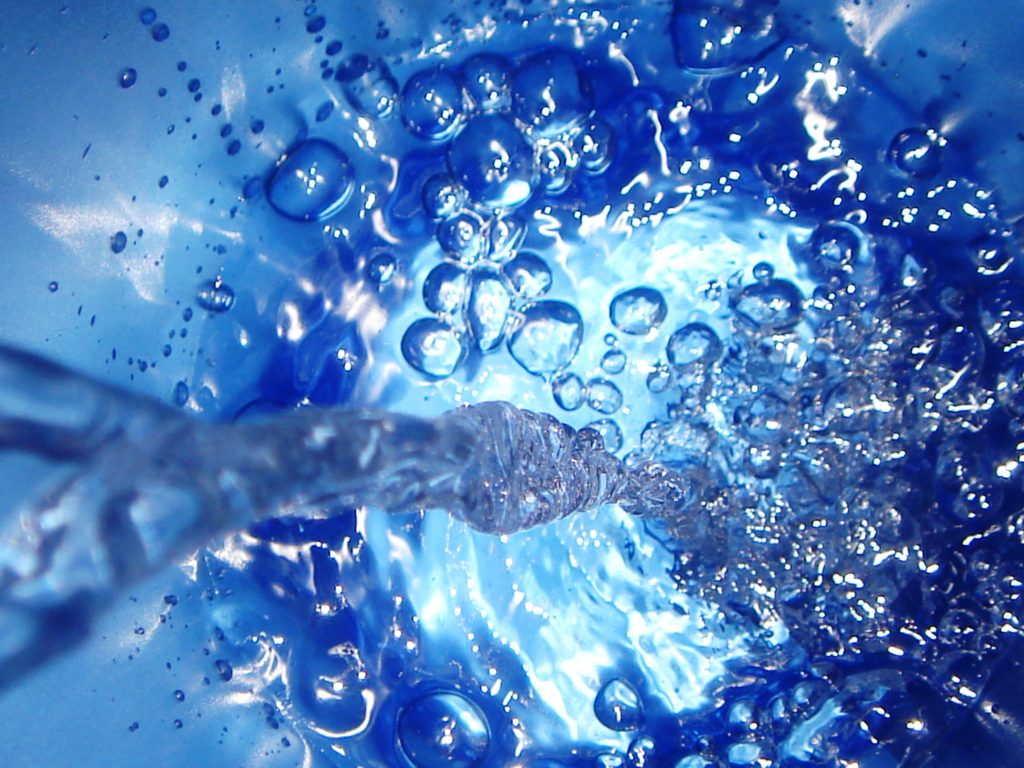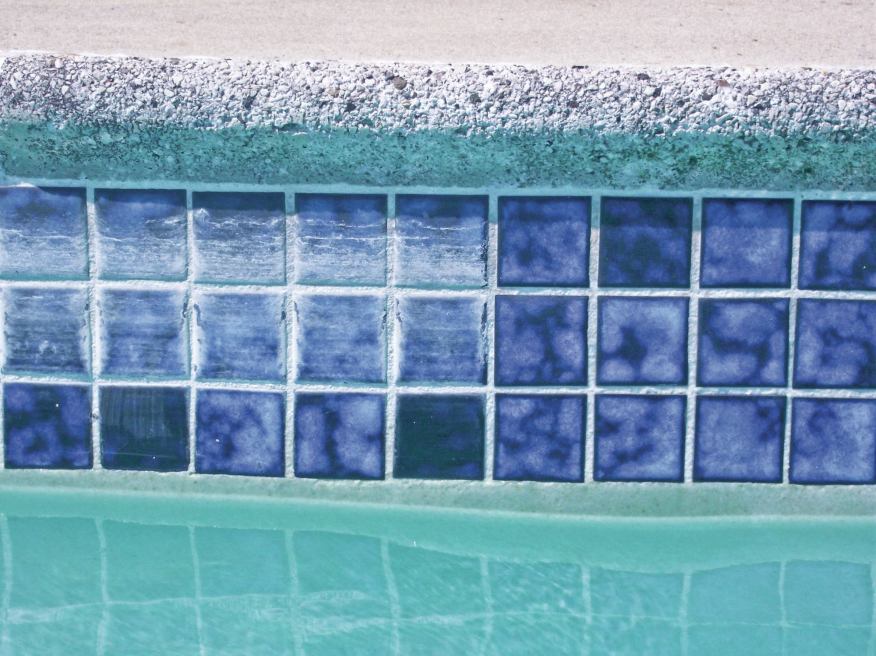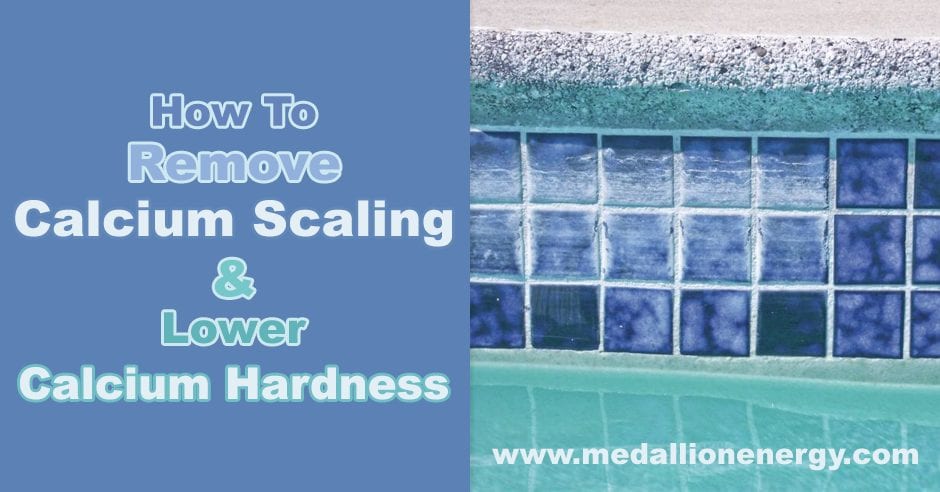Calcium scaling isn’t fun for anyone. It dirties your pool walls with unappealing, chalk-white deposits along the water line. The same type of scaling that affects your pool equipment and plumbing as well, accelerating wear and tear. You know it’s because of your calcium hardness levels, but keeping them controlled is tough. Plus, you still need to figure out how to remove calcium scaling and buildup.
Fortunately, that’s what this blog post is all about.
About Calcium Hardness
In terms of your pool water, calcium hardness affects how “soft” your water feels to the touch. Ideal calcium hardness levels sit between 200 to 275 ppm, but certain states have naturally higher levels of calcium in their water. This is what makes controlling calcium hardness such an issue for some pool owners.
[New to pool ownership? This pool owner guide is the perfect resource for you]
As mentioned earlier, excessive calcium hardness leads to scaling, which adds unappealing white deposits along your pool walls and harmful scaling within your pool equipment and plumbing. So naturally, the best way to combat remove calcium scaling and lower calcium hardness is to attack the problem at the root.
Your pool chemistry.
How to control Calcium Hardness
Your pool water’s calcium hardness is directly influenced by the chemical balance of your pool, so here are a few methods for controlling it.
Keep water balanced
pH and Total Alkalinity levels are the most significant factors when it comes to controlling calcium hardness. Therefore, your best course of action is keeping those levels in their ideal ranges. If you’ve been testing and balancing your water all along, this will be an easy adjustment. If not, check out this helpful guide on how to manage pool chemicals.
But for now, here’s a quick reference:
- Ideal pH = 7.4 to 7.6
- Ideal Total Alkalinity = 100 to 150 ppm
How to lower Calcium Hardness

So now you know how to manage calcium hardness, but what about lowering it? Here are few effective strategies for just that:
The pool draining method
This is the best way to permanently lower your calcium hardness level, but it does call for a bit of extra effort. The logic behind this method is dilution, or rather, “watering down” your pool water with new water. Specifically, filtered water with low calcium levels. You can obtain this water either at home with a water softening system/filter that reduces hardness, or from companies that deliver filtered water.
Drain about 1/4th of your pool water to start, then test your water once it’s been replaced with new water.
Calcium Hardness Reducer
A much faster, but temporary fix involves using a calcium hardness reducer chemical. When used, the chemical binds to calcium carbonate particles, allowing your pool filter to more effectively assist you with removal.
It should be mentioned that using calcium hardness reducers increases the level of orthophosphates in your pool water — making pool algae growth more likely. But even if that does happen, here’s a helpful guide on how to remove pool algae.
Purposely cloud water, use flocculant
If you’re really in a hurry and need the calcium gone today, this is the method for you. The trick here is to intentionally let your pH and Alkalinity levels rise, which leads to cloudy pool water. When that happens, use a flocculant to force all of the white into a neat cloud on the pool floor. As soon as the cloud finishes forming, use your pool vacuum to quickly remove it.
Proceed with caution when using this method, because waiting too long to vacuum after the flocculant has taken effect can result in scaling at the bottom of your pool.
But luckily, that’s what we’re getting to right now.
How to remove calcium scaling

We’re not going to dance around it: effectively removing calcium scaling requires some elbow grease, some good ole manual labor. Especially if the scaling has had a good amount of time to set in. But rest easy, because the removal process is pretty straight forward. Here are a few good ways to remove calcium scaling.
Use a pumice stone
Wondering how to remove calcium deposits from swimming pool tiles?
If you have a concrete pool or tile wall, use a pumice stone to buff away any buildup. The stone is soft enough to be safely used on the surface of your pool, just remember to keep the stone wet while scrubbing to avoid any accidental damage.
Use a stain eraser
These convenient handheld tools are great for pool owners with fiberglass or vinyl pools, or for those who just want to take that extra step. Stain erasers can be attached to poles and work on multiple types of stains, including calcium buildup. Using stain erasers is also one of the safest methods for removing calcium deposits from pool liner.
Use a pool scale and stain remover
Using a scale and stain remover chemical is great for a quick fix. When applied, the chemical lifts the calcium buildup off of whatever it’s stuck to. You can pick some up swimming pool scale remover at your local pool store.
Important side note: Avoid using calcium chlorite based sanitizers when dealing with calcium hardness problems, as they’ll only “fuel the fire”, adding more calcium to your water.
Closing thoughts
At this point, you should feel like a pro when it comes to dealing with excessive calcium hardness. Whether you need to remove calcium scaling or bring your levels down, you have a good range of options. In the end, the best way to handle calcium hardness issues is by maintaining good pool chemistry.
